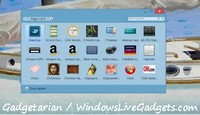Some tips for better safety and security on line
I mean secure from hackers and viruses, not anonymous browsing.
1. The absolutely first of your tasks when you setup your new computer is to ensure a good virus, spyware and stealing-of-personal-data attacks protection. For this read the 7 Steps to a nice (and free) antivirus solution.
2. Because you now feel safe, don’t forget to backup your important data. This is not only against virus attacks, but even against mistakes of yours or hardware failures. Schedule regular backups to occur at least once per month. Backup on a second hard-disk, if you have one, but always (at least the most precious of your data) on a dvd, ebook, or whatever medium is not always attached to your computer.
3. Always install system and security updates.
4. Don’t install a program unless you are sure it does not hide malware and viruses, whether you obtained it from a trusted source, or from a magazine, p2p network, email attachments, etc. Scan it first with your antivirus application and in the process of the installation be careful and read all the dialogues that appear. Don’t hurry to click OK in order to finish the installation quickly. Read everything, think on possible warnings your anti-spyware applications give you; do not install programs that require installations of hidden programs bundled in them.
5. Do not use web sites that require from you to download software. Malicious sites may not even let you close the browser until you download their software. In such a case press Ctlr+Shift+Esc to open the Task Manager, locate there Internet Explorer, select it and press the “End Process” button to terminate this browser instance.
